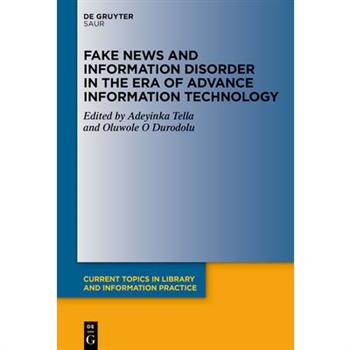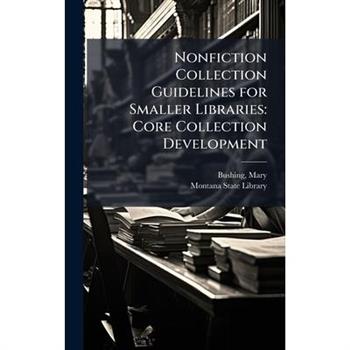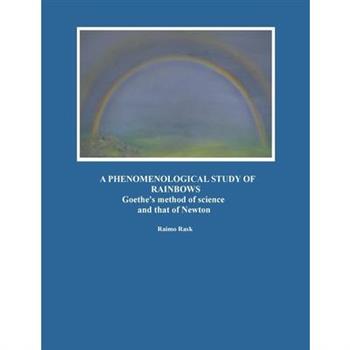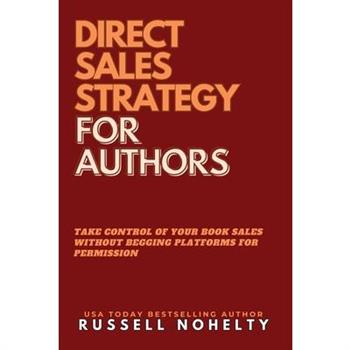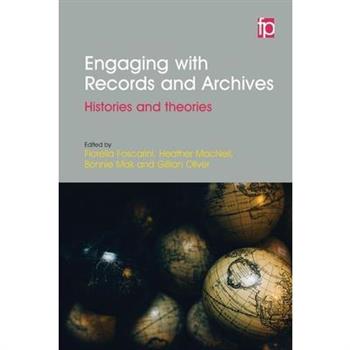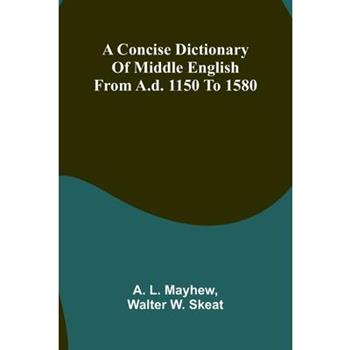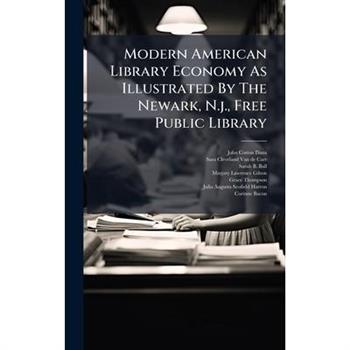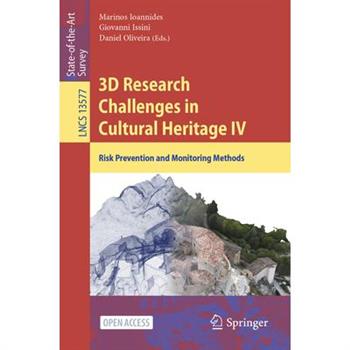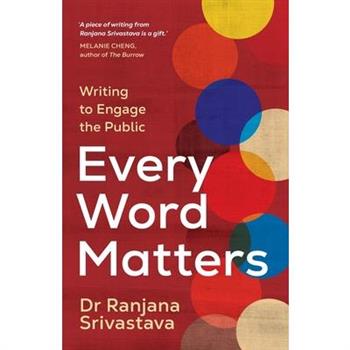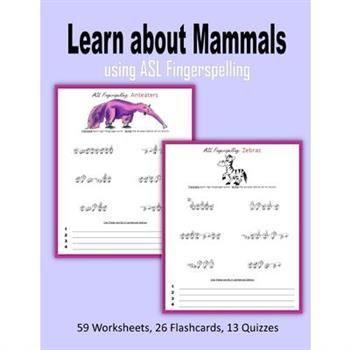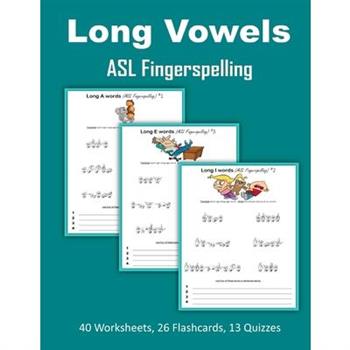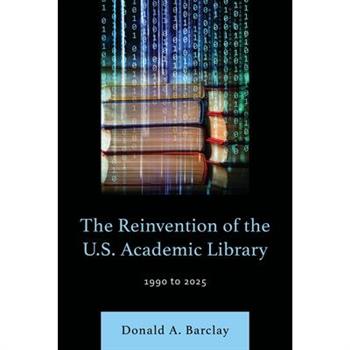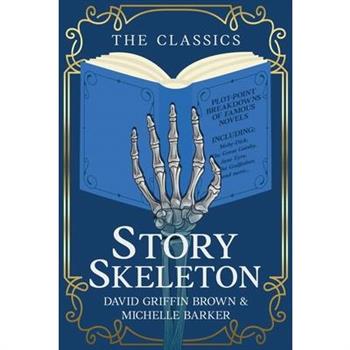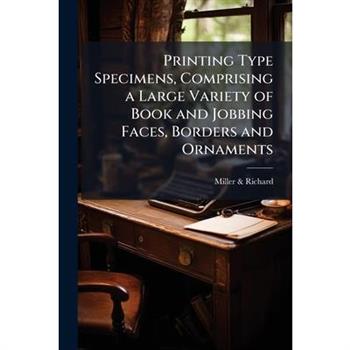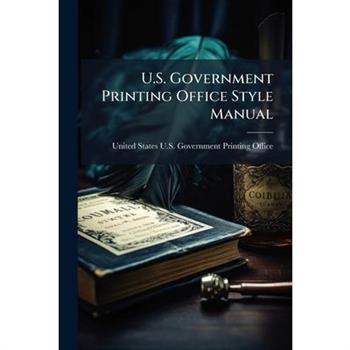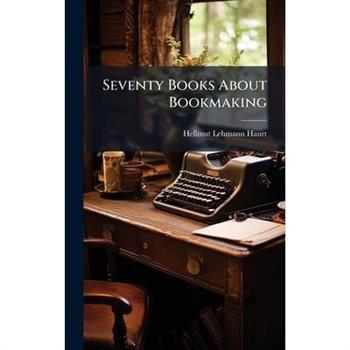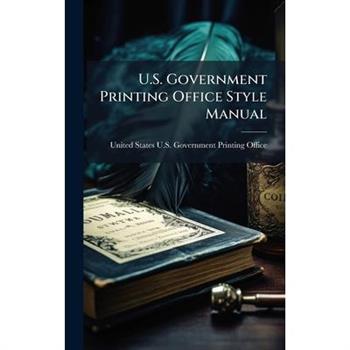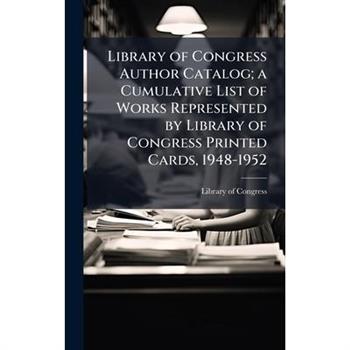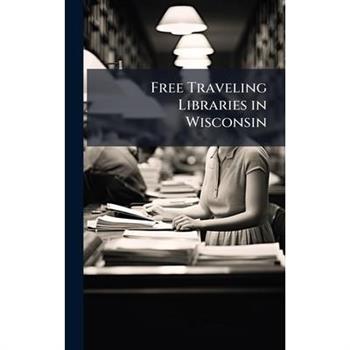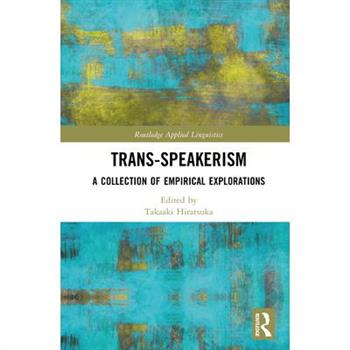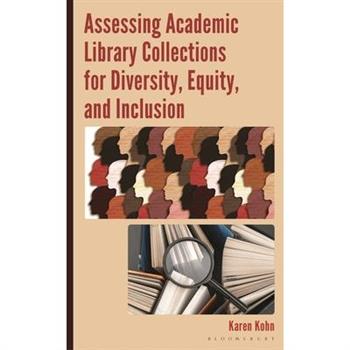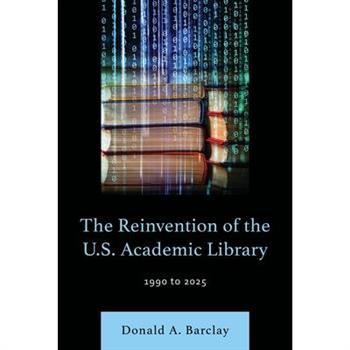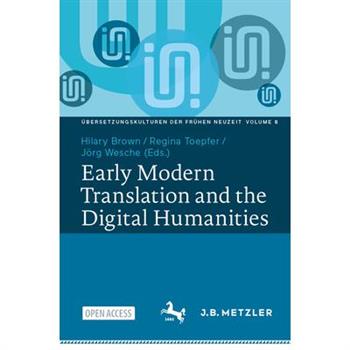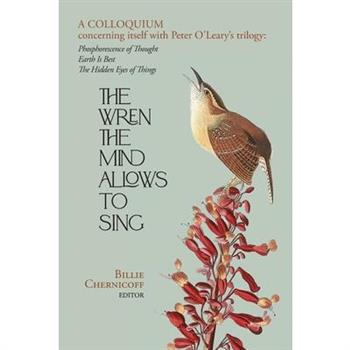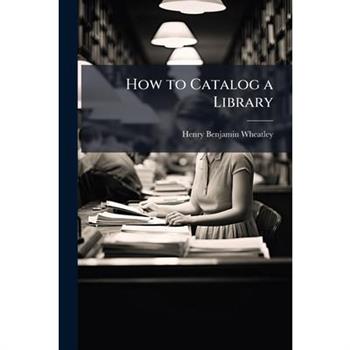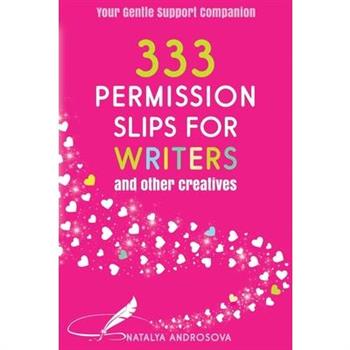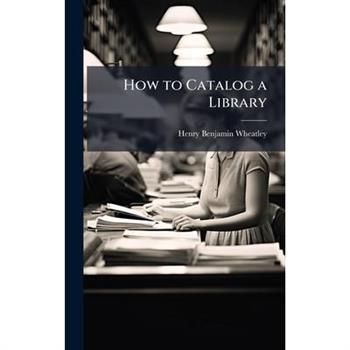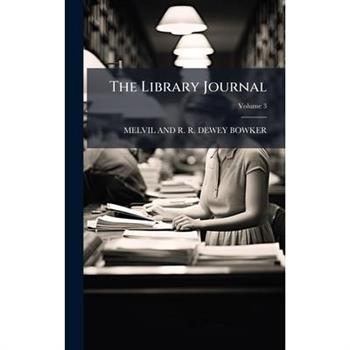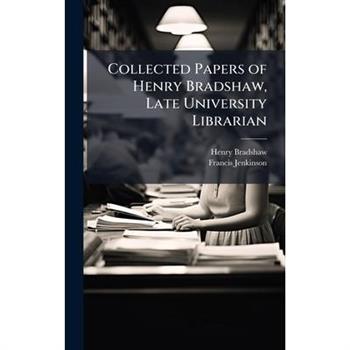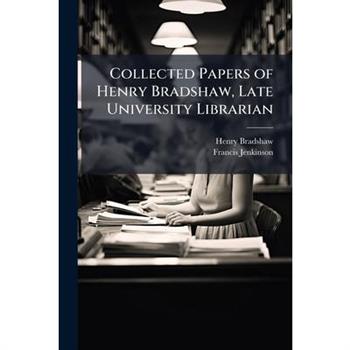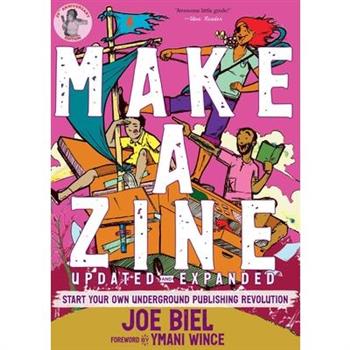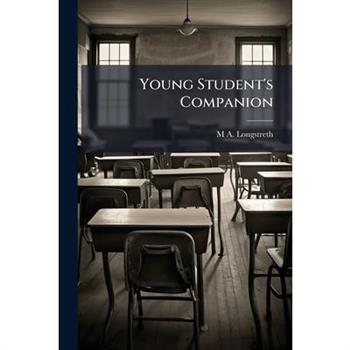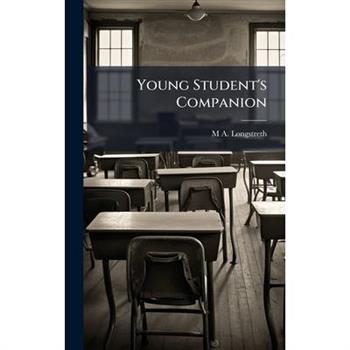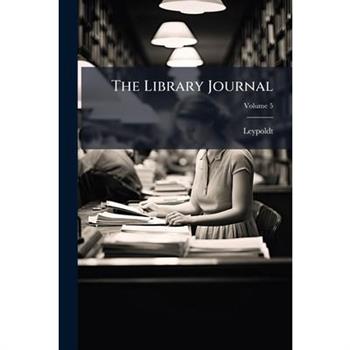Fake News and Information Disorder in the Era of Advance Information Technology
Information pollution on a worldwide scale is a new phenomenon brought on by the advancement of modern advanced social information technology. The long-term effects of disinformation efforts are the most concerning because they are difficult to evaluate in terms of their direct and indirect effects. Information disorder, also known as misinformation, disinformation, and malinformation, is currently wreaking havoc in our society. It is defined as the spreading or development of inaccurate information with or without the aim to harm. Due to the extensive harm it has already done on all of these levels--politically, economically, culturally, socially, spiritually, and even psychologically--immediate action is required to stop the situation. As a result, the book Fake News and Information Disorder in the Era of Advance Information Technology is an effort to thoroughly examine information disorder, its related challenges, the role that libraries and other information organizations can play, and to outline approaches to addressing information pollution.
Nonfiction Collection Guidelines for Smaller Libraries
Nonfiction Collection Guidelines for Smaller Libraries: Core Collection Development offers guidance for librarians in smaller libraries in developing and maintaining a strong nonfiction collection. Published in 1988, this resource provides insights into collection development principles, focusing on the selection and acquisition of essential nonfiction materials to meet the informational needs of library patrons. Authored by Mary Bushing and the Montana State Library, this work emphasizes the importance of a well-rounded core collection that supports lifelong learning and community engagement. Although some information might be dated, the underlying principles of thoughtful collection development remain relevant for librarians seeking to build a valuable and responsive nonfiction collection.This work has been selected by scholars as being culturally important, and is part of the knowledge base of civilization as we know it. This work was reproduced from the original artifact, and remains as true to the original work as possible. Therefore, you will see the original copyright references, library stamps (as most of these works have been housed in our most important libraries around the world), and other notations in the work.This work is in the public domain in the United States of America, and possibly other nations. Within the United States, you may freely copy and distribute this work, as no entity (individual or corporate) has a copyright on the body of the work.As a reproduction of a historical artifact, this work may contain missing or blurred pages, poor pictures, errant marks, etc. Scholars believe, and we concur, that this work is important enough to be preserved, reproduced, and made generally available to the public. We appreciate your support of the preservation process, and thank you for being an important part of keeping this knowledge alive and relevant.
A Phenomenological Study of Rainbows
Johan Wolfgang von Goethe is known as a celebrated German poet, however, his scientific accomplishments have remained rather unknown. Yet, Goethe had a keen interest in all the science of his time and he has written a number of books and writings on mineralogy, geology, botany, morphology, osteology, zoology, meteorology, chemistry, physics and chromatics. This work concentrates on Goethe's studies of prismatic color phenomena and the formation of rainbows from a phenomenological point of view, they are also compared to the Newtonian physics of the time. 46 color photographs are included which illustrate the studied phenomena. Goethe's phenomenological way of doing science can be said to be complementary to way of mathematical physics.
How to Launch Your Book on Kickstarter
Launch your book like a pro. Get paid up front. Build readers for life.Looking for more control over your book launches? Tired of relying on algorithms to reach your readers? Ready to turn loyal fans into your most valuable launch partners?Kickstarter makes all that possible, and more. In this practical, no-fluff guide, USA Today bestselling author Russell Nohelty, veteran of over 50 successful campaigns, shares the exact strategies he's used to raise over $650,000 for his own projects, along with the tactics that have helped other authors raise millions more. You'll learn how to plan, price, and launch your campaign, avoid common pitfalls, and use Kickstarter to build long-term momentum for your career.Whether you're launching your first project or leveling up your next one, this book walks you through every step. If you're ready to stop gambling on algorithms and start launching with purpose, this is the playbook you need.
Direct Sales Strategy for Authors
Most authors don't have a sales problem. They have a system problem.Direct Sales Strategy for Authors gives you proven, repeatable systems to sell more books, keep more of your revenue, and build a real business around your writing without relying on luck, platforms, or chasing the next trend. Whether you're looking to increase your website sales, crush your next crowdfunding campaign, build your membership, or sell better at conventions, this book will give you the results-driven approaches that helped build thousands of author careers. USA Today bestselling author Russell Nohelty has sold tens of thousands of books through his own store, at live events, and across more than fifty successful Kickstarter campaigns. This isn't theory. It's the strategy he's used (and taught) to help authors take back control of their careers and make millions of dollars in the process.You'll learn: How to build a homepage and store that turn browsers into buyersWhat makes a landing page convert (and why most don't)How to run a Kickstarter like a launch, not a leap of faithHow to confidently sell at live eventsHow to bundle, price, and position your work to boost revenueWhether you're just getting started or ready to scale, Direct Sales Strategy for Authors gives you the systems, structure, and strategy to build a business that works without burnout, guesswork, or gatekeepers.Direct sales works. Here's how to make it work for you.
Teacher Emotions as Personal and Professional Development in Applied Linguistics
This book explores how language teacher emotional responses provide data that can be analyzed and reflected upon and be used as tools to improve personal growth and professional development. The chapters show the potential of emotions to develop emotional literacy, emotional intelligence, emotional agility and regulation and emotional memory.
A Concise Dictionary of Middle English from A.D. 1150 to 1580
Unlock the rich tapestry of the English language with "A Concise Dictionary of Middle English from A.D. 1150 to 1580," a remarkable resource that has been out of print for decades and is now lovingly republished by Alpha Editions. This edition is not just a reprint; it s a collector s item and a cultural treasure, meticulously restored for today s and future generations. Dive into the heart of Middle English vocabulary, where each entry reveals the etymology and evolution of words that shaped medieval literature and continue to influence modern English. This comprehensive Middle English guide serves as an essential language reference book for academics, linguists, and casual readers alike, offering invaluable insights into the historical linguistics of our language. Whether you re a classic literature enthusiast or a language learner seeking to deepen your understanding of English s roots, this dictionary opens the door to a fascinating era of linguistic development. Explore the nuances of Middle English and appreciate the beauty of words that have stood the test of time. Join the journey through history and language with this indispensable resource, perfect for both scholarly pursuits and personal exploration. Don t miss your chance to own a piece of literary heritage grab your copy today and enrich your understanding of English s vibrant past!
Modern American Library Economy As Illustrated By The Newark, N.j., Free Public Library
Modern American Library Economy As Illustrated By The Newark, N.j., Free Public Library offers insights into the innovative practices of the Newark Free Public Library under the direction of John Cotton Dana. This volume focuses on the library's approach to creating and utilizing booklists and other publications as essential tools for engaging the public and promoting literacy. Featuring contributions from Sara Cleveland Van de Carr, Sarah B. Ball, Marjary Lawrence Gilson, Grace Thompson, Julia Augusta Scofield Harron, and Corinne Bacon, the book details the methods and philosophies that made the Newark library a model for modern library services. It serves as a valuable resource for library professionals and historians interested in the evolution of library science and its impact on community engagement.This work has been selected by scholars as being culturally important, and is part of the knowledge base of civilization as we know it. This work was reproduced from the original artifact, and remains as true to the original work as possible. Therefore, you will see the original copyright references, library stamps (as most of these works have been housed in our most important libraries around the world), and other notations in the work.This work is in the public domain in the United States of America, and possibly other nations. Within the United States, you may freely copy and distribute this work, as no entity (individual or corporate) has a copyright on the body of the work.As a reproduction of a historical artifact, this work may contain missing or blurred pages, poor pictures, errant marks, etc. Scholars believe, and we concur, that this work is important enough to be preserved, reproduced, and made generally available to the public. We appreciate your support of the preservation process, and thank you for being an important part of keeping this knowledge alive and relevant.
Language Ideologies and L2 Speaker Legitimacy
This book examines dilemmas faced by second language Japanese speakers as a result of persistent challenges to their legitimacy as speakers of Japanese. It explores ideologies linked to three core speech styles of Japanese - keigo or polite language, gendered language and regional dialects - to show how such ideologies impact L2-Japanese speakers.
The Lab
Writers don't need formulas; they need encouragement to take risks. The Lab offers a bold, hands-on approach, urging writers to embrace uncertainty, experiment with form, and investigate what haunts them. The Lab features ten chapters and ninety exercises challenging writers to play with fiction, memoir, and poetry--or push toward hybrid or entirely new forms.This is a book for those ready to dig deep and write fearlessly.
Every Word Matters
Every Word Matters is an essential guide for writers who want to make a difference. Renowned for her insightful columns in the Guardian, Dr Ranjana Srivastava brings her signature clarity and intelligence to the art of writing opinion columns, advocacy pieces and essays.With wisdom and warmth, she skilfully guides readers through the challenges and rewards of writing. From simplifying complex ideas to developing a distinctive voice and engaging the audience, Srivastava offers practical advice drawn from her own experiences of both setbacks and successes.Whether your goal is to educate, inspire, or advocate, this book will help you transform your ideas into compelling writing.What makes Every Word Matters especially powerful is Srivastava's dual perspective as both an oncologist and a writer, giving her a unique understanding of the power of language to inform, persuade and heal.A must read for aspiring writers, professionals, and anyone curious about the writing process, Every Word Matters is a powerful reminder of why writing well truly matters.
Learn about Mammals using ASL Fingerspelling
This workbook has 59 worksheets to help your students explore mammals. Your students will be exposed to over 300 mammal words written on the page using the American Sign Language fingerspelling font. I've included a cheat sheet so you can teach your students how to sign all twenty-six letters of the alphabet, as well as flashcards so they can take them home and practice signing the letters. I've included thirteen different alphabet quizzes so you can evaluate mastery of the alphabet (and record a grade). Everything you need in one workbook from start to finish. What a great way to explore a second language (Sign Language) while expanding your students' vocabulary. Your students will learn that an anteater's babies are called "pups" and that a group of anteaters is a "parade" of anteaters. And a group of camels are known as a "caravan," while a group of tigers is called an "ambush". They'll learn that not only is a baby kangaroo called a "joey", but so are the distant cousins the koala and the opossum. A baby mouse is called a "pinkie," and lots of baby mammals besides the cow are called a calf. Mammals: anteater, bear, beaver, armadillo, bat, buffalo, camel, cat, cow, coyote, deer, dog, dolphin, donkey, duck-billed platypus, elephant, elk, ferret, fox, gazelle, giraffe, goat, gorilla, guinea pig, hippo, horse, human, hyena, kangaroo, koala, llama, leopard, lion, lemur, manatee, mouse, mole, monkey, otter, panda, pig, porcupine, opossum, prairie dog, rabbit, raccoon, rat, rhino, seal, sheep, skunk, sloth, squirrel, tiger, walrus, warthog, whale, wolf and zebra.
Long Vowels - ASL Fingerspelling
This workbook has 40 worksheets to help your students explore words with long vowels. Your students will be exposed to 240 words using the American Sign Language fingerspelling font. I've included a cheat sheet, so you can teach your students how to sign all twenty-six letters of the alphabet, as well as flashcards so they can take them home and practice signing the letters. I've included thirteen different ASL alphabet quizzes so you can evaluate mastery (and record a grade). Everything you need in one workbook from start to finish. What a great way to explore a second language (Sign Language) while expanding your students' vocabulary. You'll find words like: angel, blade, chain, eight, museum, niece, squeak, alike, ice-cream, poison ivy, rhyme, elbow, gecko, potatoes, cupid, moon, parachute, unicorn, and many more.And, if you want wildlife photos mixed with fingerspelling, then take a look at my "ASL Alphabet Series" Sign Language: Learn to Fingerspell Wildlife Words, Volume 1Sign Language: Learn to Fingerspell Wildlife Words, Volume 2Sign Language: Learn to Fingerspell Wildlife Words, Volume 3Sign Language: Learn to Fingerspell Wildlife Words, Volume 4Sign Language: Learn to Fingerspell Wildlife Words, Volume 5Sign Language: Learn to Fingerspell Wildlife Words, Volume 6Sign Language: Learn to Fingerspell Wildlife Words, Volume 7Sign Language: Learn to Fingerspell Wildlife Words, Volume 8Sign Language: Learn to Fingerspell Wildlife Words, Volume 9Sign Language: Learn to Fingerspell Wildlife Words, Volume 10Frequently Misspelled Words (ASL Fingerspelling) - 2nd and 3rd GradeFrequently Misspelled Words (ASL Fingerspelling) - 4th and 5th GradeFrequently Misspelled Words (ASL Fingerspelling) - 6th to 8th GradeSynonyms - ASL FingerspellingPrefixes and Suffixes - ASL FingerspellingLong Vowels - ASL FingerspellingDolch Sight Words (Pre-K to Third Grade): ASL Sign Language Flashcards and Worksheets
The Reinvention of the U.S. Academic Library
The information most essential for life in the modern world falls under the rubric of scholarly communication: the vast and ever-growing body of words and data produced by scholarly researchers, the majority of whom work in academia. Scholarly communications are fundamental to creating and informing the digital and mechanical tools we use every day, contributing to the world in which we live, advanced healthcare, macro- and micro-economic choices, environmental sustainability, concepts of justice and equity, and a fuller understanding of the human history. For the last several centuries, there have been three key components to scholarly communication: - The scholars who conduct the research, gather the data, and record their findings. - The scholarly publishers who replicate and distribute those findings. - The academic libraries that provide connection between the fruits of scholarly communications and the researchers, instructors, students, and members of the general public who then use that information to advance learning and make decisions both personal and public. Focusing on U.S. academic libraries, The Reinvention of the U.S. Academic Library begins by providing a concise history of the traditional role and function of academic libraries from their earliest times up to the dawn of theDigital Age and the spread of digital technology into all aspects of academic research and scholarly communication. This introduction is followed by chapters analyzing how digital technology has transformed, over the course of a few swift decades, not only the role and function of academic libraries, but also the nature of scholarly communication itself. Specifically, The Reinvention of the U.S. Academic Library will consider how digital technology has changed the way academic libraries: - Acquire and exercise bibliographic control over collections. - Provide equitable access to information. Allocate and utilize library space. Instruct and guide students, faculty, and others. - Relate to the larger academic and scholarly publishing communities. Sustain scholarly communications.
Story Skeleton
In Story Skeleton: The Classics, we unlock the secrets of twenty-one enduring novels-from Pride and Prejudice to The Godfather-revealing the plot points and craft genius that make them masterpieces. Discover the method behind the magic, and learn how to apply these timeless techniques to elevate your own writing and captivate readers for generations.As Orson Welles said, "The absence of limitations is the enemy of art."A novel's structural elements can be organized strategically, creatively, unusually-but in a satisfying narrative, they're all there in some form. That form might be surprising when you realize what the author has really done-which often isn't clear the first or even second time you read a complex novel. But once you crack the code, it's immensely satisfying.
Printing Type Specimens, Comprising a Large Variety of Book and Jobbing Faces, Borders and Ornaments
"Printing Type Specimens" offers a comprehensive catalog of book and jobbing faces, borders, and ornaments from Miller & Richard, a renowned firm in the printing industry. This volume showcases a wide variety of fonts and decorative elements essential for graphic design and typography. It serves as a valuable resource for designers, historians, and anyone interested in the art and craft of printing. This work provides insight into the aesthetic and technical aspects of printing in the late 19th and early 20th centuries, documenting the styles and trends that shaped the visual landscape of printed materials.This work has been selected by scholars as being culturally important, and is part of the knowledge base of civilization as we know it. This work was reproduced from the original artifact, and remains as true to the original work as possible. Therefore, you will see the original copyright references, library stamps (as most of these works have been housed in our most important libraries around the world), and other notations in the work.This work is in the public domain in the United States of America, and possibly other nations. Within the United States, you may freely copy and distribute this work, as no entity (individual or corporate) has a copyright on the body of the work.As a reproduction of a historical artifact, this work may contain missing or blurred pages, poor pictures, errant marks, etc. Scholars believe, and we concur, that this work is important enough to be preserved, reproduced, and made generally available to the public. We appreciate your support of the preservation process, and thank you for being an important part of keeping this knowledge alive and relevant.
U.S. Government Printing Office Style Manual
The BiblioGov Project is an effort to expand awareness of the public documents and records of the U.S. Government via print publications. In broadening the public understanding of government and its work, an enlightened democracy can grow and prosper. Ranging from historic Congressional Bills to the most recent Budget of the United States Government, the BiblioGov Project spans a wealth of government information. These works are now made available through an environmentally friendly, print-on-demand basis, using only what is necessary to meet the required demands of an interested public. We invite you to learn of the records of the U.S. Government, heightening the knowledge and debate that can lead from such publications.This work has been selected by scholars as being culturally important, and is part of the knowledge base of civilization as we know it. This work was reproduced from the original artifact, and remains as true to the original work as possible. Therefore, you will see the original copyright references, library stamps (as most of these works have been housed in our most important libraries around the world), and other notations in the work.This work is in the public domain in the United States of America, and possibly other nations. Within the United States, you may freely copy and distribute this work, as no entity (individual or corporate) has a copyright on the body of the work.As a reproduction of a historical artifact, this work may contain missing or blurred pages, poor pictures, errant marks, etc. Scholars believe, and we concur, that this work is important enough to be preserved, reproduced, and made generally available to the public. We appreciate your support of the preservation process, and thank you for being an important part of keeping this knowledge alive and relevant.
Seventy Books About Bookmaking
"Seventy Books About Bookmaking" offers a detailed exploration into the art and craft of book production. Compiled by Hellmut Lehmann-Haupt, this volume serves as a guide through seventy significant publications related to printing, typography, and book design. Lehmann-Haupt provides valuable insights, making this an essential resource for bibliophiles, historians, and practitioners alike.Originally published in 1940, this book reflects the period's appreciation for the physical artistry of books, appealing to those interested in the historical techniques and aesthetic considerations that define fine bookmaking. "Seventy Books About Bookmaking" remains relevant for anyone seeking a deeper understanding of the traditions behind the printed word.This work has been selected by scholars as being culturally important, and is part of the knowledge base of civilization as we know it. This work was reproduced from the original artifact, and remains as true to the original work as possible. Therefore, you will see the original copyright references, library stamps (as most of these works have been housed in our most important libraries around the world), and other notations in the work.This work is in the public domain in the United States of America, and possibly other nations. Within the United States, you may freely copy and distribute this work, as no entity (individual or corporate) has a copyright on the body of the work.As a reproduction of a historical artifact, this work may contain missing or blurred pages, poor pictures, errant marks, etc. Scholars believe, and we concur, that this work is important enough to be preserved, reproduced, and made generally available to the public. We appreciate your support of the preservation process, and thank you for being an important part of keeping this knowledge alive and relevant.
U.S. Government Printing Office Style Manual
The BiblioGov Project is an effort to expand awareness of the public documents and records of the U.S. Government via print publications. In broadening the public understanding of government and its work, an enlightened democracy can grow and prosper. Ranging from historic Congressional Bills to the most recent Budget of the United States Government, the BiblioGov Project spans a wealth of government information. These works are now made available through an environmentally friendly, print-on-demand basis, using only what is necessary to meet the required demands of an interested public. We invite you to learn of the records of the U.S. Government, heightening the knowledge and debate that can lead from such publications.This work has been selected by scholars as being culturally important, and is part of the knowledge base of civilization as we know it. This work was reproduced from the original artifact, and remains as true to the original work as possible. Therefore, you will see the original copyright references, library stamps (as most of these works have been housed in our most important libraries around the world), and other notations in the work.This work is in the public domain in the United States of America, and possibly other nations. Within the United States, you may freely copy and distribute this work, as no entity (individual or corporate) has a copyright on the body of the work.As a reproduction of a historical artifact, this work may contain missing or blurred pages, poor pictures, errant marks, etc. Scholars believe, and we concur, that this work is important enough to be preserved, reproduced, and made generally available to the public. We appreciate your support of the preservation process, and thank you for being an important part of keeping this knowledge alive and relevant.
Library of Congress Author Catalog; a Cumulative List of Works Represented by Library of Congress Printed Cards, 1948-1952
Library of Congress Author Catalog; a Cumulative List of Works Represented by Library of Congress Printed Cards, 1948-1952 is an invaluable reference tool for librarians, researchers, and bibliophiles. This comprehensive catalog provides an extensive listing of works cataloged by the Library of Congress during the specified period. Serving as a vital resource for identifying and locating publications, this catalog reflects the breadth and depth of the Library's holdings. Organized for ease of use, it offers detailed bibliographic information, aiding in the efficient management of library collections and facilitating scholarly research. This edition offers insights into the cataloging practices and intellectual output of the mid-20th century. A key addition to any serious research library or private collection, this catalog remains an essential resource for historical and bibliographic inquiry.This work has been selected by scholars as being culturally important, and is part of the knowledge base of civilization as we know it. This work was reproduced from the original artifact, and remains as true to the original work as possible. Therefore, you will see the original copyright references, library stamps (as most of these works have been housed in our most important libraries around the world), and other notations in the work.This work is in the public domain in the United States of America, and possibly other nations. Within the United States, you may freely copy and distribute this work, as no entity (individual or corporate) has a copyright on the body of the work.As a reproduction of a historical artifact, this work may contain missing or blurred pages, poor pictures, errant marks, etc. Scholars believe, and we concur, that this work is important enough to be preserved, reproduced, and made generally available to the public. We appreciate your support of the preservation process, and thank you for being an important part of keeping this knowledge alive and relevant.
Free Traveling Libraries in Wisconsin
"Free Traveling Libraries in Wisconsin" chronicles the establishment and expansion of mobile libraries throughout the state in the late 19th century. This book details the motivations behind the movement to bring books to underserved rural communities. It offers insights into the practical aspects of establishing and maintaining these libraries, covering topics such as book selection, transportation methods, and community engagement. The book highlights the role of dedicated individuals and organizations in championing the cause of literacy and education in rural areas. It also provides accounts of similar movements aimed at promoting access to books and knowledge. This historical record offers a valuable perspective on the evolution of library services and the enduring importance of accessible education for all.This work has been selected by scholars as being culturally important, and is part of the knowledge base of civilization as we know it. This work was reproduced from the original artifact, and remains as true to the original work as possible. Therefore, you will see the original copyright references, library stamps (as most of these works have been housed in our most important libraries around the world), and other notations in the work.This work is in the public domain in the United States of America, and possibly other nations. Within the United States, you may freely copy and distribute this work, as no entity (individual or corporate) has a copyright on the body of the work.As a reproduction of a historical artifact, this work may contain missing or blurred pages, poor pictures, errant marks, etc. Scholars believe, and we concur, that this work is important enough to be preserved, reproduced, and made generally available to the public. We appreciate your support of the preservation process, and thank you for being an important part of keeping this knowledge alive and relevant.
Free Traveling Libraries in Wisconsin
"Free Traveling Libraries in Wisconsin" chronicles the establishment and expansion of mobile libraries throughout the state in the late 19th century. This book details the motivations behind the movement to bring books to underserved rural communities. It offers insights into the practical aspects of establishing and maintaining these libraries, covering topics such as book selection, transportation methods, and community engagement. The book highlights the role of dedicated individuals and organizations in championing the cause of literacy and education in rural areas. It also provides accounts of similar movements aimed at promoting access to books and knowledge. This historical record offers a valuable perspective on the evolution of library services and the enduring importance of accessible education for all.This work has been selected by scholars as being culturally important, and is part of the knowledge base of civilization as we know it. This work was reproduced from the original artifact, and remains as true to the original work as possible. Therefore, you will see the original copyright references, library stamps (as most of these works have been housed in our most important libraries around the world), and other notations in the work.This work is in the public domain in the United States of America, and possibly other nations. Within the United States, you may freely copy and distribute this work, as no entity (individual or corporate) has a copyright on the body of the work.As a reproduction of a historical artifact, this work may contain missing or blurred pages, poor pictures, errant marks, etc. Scholars believe, and we concur, that this work is important enough to be preserved, reproduced, and made generally available to the public. We appreciate your support of the preservation process, and thank you for being an important part of keeping this knowledge alive and relevant.
Trans-Speakerism
This book gathers assorted empirical studies and discussions toreexamine the enduring influence of native-speakerism. Framing language education and related fields through trans-speakerism unveils new possibilities for both practitioners and researchers to refurbish traditional hierarchies and herald a future of inclusive excellence.
Assessment, Testing and Evaluation in English-Medium Education from a Global Perspective
This book examines assessment, testing and evaluation within English-medium education contexts globally. It explores how assessments can effectively measure learning outcomes, integrating both content mastery and language proficiency in multilingual and multicultural classrooms.
The Case Against Disclosure
The Case Against Disclosure: Defending Creative Autonomy in the Age of AI challenges the prevailing assumption that creators must disclose their methods when using artificial intelligence. As AI tools become deeply embedded in writing, research, coding, and artistic production, institutions, publishers, and the U.S. Copyright Office have moved toward transparency mandates, requiring creators to document and reveal the extent of AI assistance in their work. This book argues that such demands are neither ethically justified nor practically enforceable, representing an unnecessary and damaging encroachment on the creative process. Transparency, often framed as a safeguard for authenticity and accountability, is instead an instrument of control-one that reinforces outdated notions of originality while failing to account for the realities of AI-driven authorship. The Case Against Disclosure dismantles the myth that process defines authorship, asserting that credibility stems from the willingness to take responsibility for a work, not from exhaustive documentation of how it was made. Through legal analysis, historical parallels, and contemporary case studies, this book exposes how transparency mandates create unnecessary barriers, restricting creative autonomy and imposing impractical bureaucratic oversight on the production of knowledge and culture. Essential reading for scholars, policymakers, and professionals in media, law, and technology, this work presents a forceful argument against institutional overreach, advocating for a future in which creators retain full control over their methods. It is both a scholarly intervention and a polemic, making the case that the right to opaque creation is fundamental to intellectual and artistic freedom in the AI age.
The Reinvention of the U.S. Academic Library
The Wren The Mind Allows To Sing
We set out to read the three books of Peter O'Leary's trilogy on consciousness: Phosphorescence of Thought, Earth Is Best and The Hidden Eyes of Things. Read we did, thoughtful and mirthful, from the 1st of May through the 9th of June, 2023, 40 days and 40 nights.Here is our logbook, and our dove.Billie Chernicoff, 12 June 2023This work we've been pondering never loses its tensegrity, to invoke Buckminster Fuller. Its openness is a fretwork at times. Close weave at others. Caution, I tell myself, looking at the brilliance of critical approach and amplifying notation, the voices joined herein. Is this the charisma of age? No, just aging. To realize the world as a nine-year-old once aspired to, that of Bennet Cerf and Arlene Frances, mid-century Manhattan. Scary, long night, we endured before the dawn of pop art. No, this isn't self-indulgence on my part, Peter's range of voices sideswipes gangster movies and Spenser's Faerie Queene to our shared delight.Latter-day Goethe. It fits. The natural world, mushrooms and birds, the classical, Peter's Latin and Greek, his soulful sojourn in Vienna an "Italian Journey." Or so we discover in this colloquy when dialogue resounds rather than resolves. A Time Machine, it feels like, returning to Berkeley in the late fifties with Jack Spicer, Robert Duncan, Robin Blaser, and thus, to that last serrated edge of Modernism. Still shaken to the core by Yeats's late poems, especially compared to Pound's Personae and the impending fragmentation of his Cantos alongside Eliot's midlife abandonment of poetry. Nearly wrecked upon this reef, we see the lighthouse in time, manned by Charles Olson, and how our poetry can contain a prospect, it can, it will be a projection in and of its glorious self. -Thomas Meyer
How to Catalog a Library
"How to Catalog a Library" is a comprehensive guide to the principles and practices of library cataloging, written by Henry Benjamin Wheatley. Originally published in 1889, this book offers a detailed look into the methods used to organize and classify library materials during the late 19th century. It covers various aspects of cataloging, including the creation of accurate and accessible records, subject indexing, and the arrangement of books on shelves. This historical text provides valuable insights into the evolution of library science and offers a glimpse into the challenges and solutions faced by librarians in an era before modern technology. "How to Catalog a Library" is an essential resource for library science students, historians of information, and anyone interested in the development of cataloging techniques and the organization of knowledge.This work has been selected by scholars as being culturally important, and is part of the knowledge base of civilization as we know it. This work was reproduced from the original artifact, and remains as true to the original work as possible. Therefore, you will see the original copyright references, library stamps (as most of these works have been housed in our most important libraries around the world), and other notations in the work.This work is in the public domain in the United States of America, and possibly other nations. Within the United States, you may freely copy and distribute this work, as no entity (individual or corporate) has a copyright on the body of the work.As a reproduction of a historical artifact, this work may contain missing or blurred pages, poor pictures, errant marks, etc. Scholars believe, and we concur, that this work is important enough to be preserved, reproduced, and made generally available to the public. We appreciate your support of the preservation process, and thank you for being an important part of keeping this knowledge alive and relevant.
333 Permission Slips for Writers and Other Creatives
How to Catalog a Library
"How to Catalog a Library" is a comprehensive guide to the principles and practices of library cataloging, written by Henry Benjamin Wheatley. Originally published in 1889, this book offers a detailed look into the methods used to organize and classify library materials during the late 19th century. It covers various aspects of cataloging, including the creation of accurate and accessible records, subject indexing, and the arrangement of books on shelves. This historical text provides valuable insights into the evolution of library science and offers a glimpse into the challenges and solutions faced by librarians in an era before modern technology. "How to Catalog a Library" is an essential resource for library science students, historians of information, and anyone interested in the development of cataloging techniques and the organization of knowledge.This work has been selected by scholars as being culturally important, and is part of the knowledge base of civilization as we know it. This work was reproduced from the original artifact, and remains as true to the original work as possible. Therefore, you will see the original copyright references, library stamps (as most of these works have been housed in our most important libraries around the world), and other notations in the work.This work is in the public domain in the United States of America, and possibly other nations. Within the United States, you may freely copy and distribute this work, as no entity (individual or corporate) has a copyright on the body of the work.As a reproduction of a historical artifact, this work may contain missing or blurred pages, poor pictures, errant marks, etc. Scholars believe, and we concur, that this work is important enough to be preserved, reproduced, and made generally available to the public. We appreciate your support of the preservation process, and thank you for being an important part of keeping this knowledge alive and relevant.
The Library Journal
Dive into the world of library science with Volume 3 of "The Library Journal," a historical periodical offering insights into the development of libraries and librarianship. Authored by MELVIL AND R. R. DEWEY BOWKER, this volume provides a snapshot of the issues, discussions, and advancements shaping the library landscape during its time. Explore articles, reviews, and news related to library management, cataloging, and the broader world of publishing. This volume serves as a valuable resource for historians, library science students, and anyone interested in the evolution of information access and dissemination. Discover the foundational principles and practices that continue to influence modern library systems through this enduring collection of knowledge and perspectives.This work has been selected by scholars as being culturally important, and is part of the knowledge base of civilization as we know it. This work was reproduced from the original artifact, and remains as true to the original work as possible. Therefore, you will see the original copyright references, library stamps (as most of these works have been housed in our most important libraries around the world), and other notations in the work.This work is in the public domain in the United States of America, and possibly other nations. Within the United States, you may freely copy and distribute this work, as no entity (individual or corporate) has a copyright on the body of the work.As a reproduction of a historical artifact, this work may contain missing or blurred pages, poor pictures, errant marks, etc. Scholars believe, and we concur, that this work is important enough to be preserved, reproduced, and made generally available to the public. We appreciate your support of the preservation process, and thank you for being an important part of keeping this knowledge alive and relevant.
Collected Papers of Henry Bradshaw, Late University Librarian
This is a collection of the papers of Henry Bradshaw (1831-1886), the late University Librarian at Cambridge. The compilation includes his 璽€~Memoranda, ' communications read before the Cambridge Antiquarian Society, an article contributed to 'The Bibliographer, ' and two papers not previously published. Bradshaw was a significant figure in the world of librarianship and bibliography, and this collection offers insights into his work and thoughts. Compiled by Francis Jenkinson, this volume preserves Bradshaw's contributions to the understanding of library science and historical research. It is an invaluable resource for anyone interested in the history of libraries, the development of bibliographic techniques, and the intellectual life of Victorian England.This work has been selected by scholars as being culturally important, and is part of the knowledge base of civilization as we know it. This work was reproduced from the original artifact, and remains as true to the original work as possible. Therefore, you will see the original copyright references, library stamps (as most of these works have been housed in our most important libraries around the world), and other notations in the work.This work is in the public domain in the United States of America, and possibly other nations. Within the United States, you may freely copy and distribute this work, as no entity (individual or corporate) has a copyright on the body of the work.As a reproduction of a historical artifact, this work may contain missing or blurred pages, poor pictures, errant marks, etc. Scholars believe, and we concur, that this work is important enough to be preserved, reproduced, and made generally available to the public. We appreciate your support of the preservation process, and thank you for being an important part of keeping this knowledge alive and relevant.
Collected Papers of Henry Bradshaw, Late University Librarian
This is a collection of the papers of Henry Bradshaw (1831-1886), the late University Librarian at Cambridge. The compilation includes his 璽€~Memoranda, ' communications read before the Cambridge Antiquarian Society, an article contributed to 'The Bibliographer, ' and two papers not previously published. Bradshaw was a significant figure in the world of librarianship and bibliography, and this collection offers insights into his work and thoughts. Compiled by Francis Jenkinson, this volume preserves Bradshaw's contributions to the understanding of library science and historical research. It is an invaluable resource for anyone interested in the history of libraries, the development of bibliographic techniques, and the intellectual life of Victorian England.This work has been selected by scholars as being culturally important, and is part of the knowledge base of civilization as we know it. This work was reproduced from the original artifact, and remains as true to the original work as possible. Therefore, you will see the original copyright references, library stamps (as most of these works have been housed in our most important libraries around the world), and other notations in the work.This work is in the public domain in the United States of America, and possibly other nations. Within the United States, you may freely copy and distribute this work, as no entity (individual or corporate) has a copyright on the body of the work.As a reproduction of a historical artifact, this work may contain missing or blurred pages, poor pictures, errant marks, etc. Scholars believe, and we concur, that this work is important enough to be preserved, reproduced, and made generally available to the public. We appreciate your support of the preservation process, and thank you for being an important part of keeping this knowledge alive and relevant.
Counsels to Authors and Hints to Advertisers
"Counsels to Authors and Hints to Advertisers" offers timeless advice for writers seeking publication and businesses aiming to promote their products. This practical guide, originally published in the late 19th century, provides insights into crafting compelling narratives, understanding the publishing landscape, and creating effective advertising campaigns.While the methods of publishing and advertising have evolved, the core principles of clear communication, persuasive writing, and understanding your audience remain essential. This book offers valuable historical context and enduring wisdom for anyone involved in writing, marketing, or publishing.This work has been selected by scholars as being culturally important, and is part of the knowledge base of civilization as we know it. This work was reproduced from the original artifact, and remains as true to the original work as possible. Therefore, you will see the original copyright references, library stamps (as most of these works have been housed in our most important libraries around the world), and other notations in the work.This work is in the public domain in the United States of America, and possibly other nations. Within the United States, you may freely copy and distribute this work, as no entity (individual or corporate) has a copyright on the body of the work.As a reproduction of a historical artifact, this work may contain missing or blurred pages, poor pictures, errant marks, etc. Scholars believe, and we concur, that this work is important enough to be preserved, reproduced, and made generally available to the public. We appreciate your support of the preservation process, and thank you for being an important part of keeping this knowledge alive and relevant.
The Library Journal
Dive into the world of library science with Volume 3 of "The Library Journal," a historical periodical offering insights into the development of libraries and librarianship. Authored by MELVIL AND R. R. DEWEY BOWKER, this volume provides a snapshot of the issues, discussions, and advancements shaping the library landscape during its time. Explore articles, reviews, and news related to library management, cataloging, and the broader world of publishing. This volume serves as a valuable resource for historians, library science students, and anyone interested in the evolution of information access and dissemination. Discover the foundational principles and practices that continue to influence modern library systems through this enduring collection of knowledge and perspectives.This work has been selected by scholars as being culturally important, and is part of the knowledge base of civilization as we know it. This work was reproduced from the original artifact, and remains as true to the original work as possible. Therefore, you will see the original copyright references, library stamps (as most of these works have been housed in our most important libraries around the world), and other notations in the work.This work is in the public domain in the United States of America, and possibly other nations. Within the United States, you may freely copy and distribute this work, as no entity (individual or corporate) has a copyright on the body of the work.As a reproduction of a historical artifact, this work may contain missing or blurred pages, poor pictures, errant marks, etc. Scholars believe, and we concur, that this work is important enough to be preserved, reproduced, and made generally available to the public. We appreciate your support of the preservation process, and thank you for being an important part of keeping this knowledge alive and relevant.
Counsels to Authors and Hints to Advertisers
"Counsels to Authors and Hints to Advertisers" offers timeless advice for writers seeking publication and businesses aiming to promote their products. This practical guide, originally published in the late 19th century, provides insights into crafting compelling narratives, understanding the publishing landscape, and creating effective advertising campaigns.While the methods of publishing and advertising have evolved, the core principles of clear communication, persuasive writing, and understanding your audience remain essential. This book offers valuable historical context and enduring wisdom for anyone involved in writing, marketing, or publishing.This work has been selected by scholars as being culturally important, and is part of the knowledge base of civilization as we know it. This work was reproduced from the original artifact, and remains as true to the original work as possible. Therefore, you will see the original copyright references, library stamps (as most of these works have been housed in our most important libraries around the world), and other notations in the work.This work is in the public domain in the United States of America, and possibly other nations. Within the United States, you may freely copy and distribute this work, as no entity (individual or corporate) has a copyright on the body of the work.As a reproduction of a historical artifact, this work may contain missing or blurred pages, poor pictures, errant marks, etc. Scholars believe, and we concur, that this work is important enough to be preserved, reproduced, and made generally available to the public. We appreciate your support of the preservation process, and thank you for being an important part of keeping this knowledge alive and relevant.
A Catalogue of the Library of the Salem Athenaeum, in Salem, Massachusetts
This is a meticulously compiled catalogue of the library of the Salem Athenaeum in Salem, Massachusetts, published in 1858. This volume not only serves as a detailed inventory of the institution's holdings at the time, but also includes a brief historical account of the Athenaeum itself, alongside its charter and by-laws. Providing a window into the intellectual and cultural life of 19th-century Salem, a town steeped in rich history, this catalogue offers invaluable insights for historians, librarians, and anyone interested in the evolution of American libraries and literary societies. It offers a glimpse into the reading habits and intellectual pursuits of the community it served. This catalogue is a testament to the enduring importance of libraries in preserving and disseminating knowledge.This work has been selected by scholars as being culturally important, and is part of the knowledge base of civilization as we know it. This work was reproduced from the original artifact, and remains as true to the original work as possible. Therefore, you will see the original copyright references, library stamps (as most of these works have been housed in our most important libraries around the world), and other notations in the work.This work is in the public domain in the United States of America, and possibly other nations. Within the United States, you may freely copy and distribute this work, as no entity (individual or corporate) has a copyright on the body of the work.As a reproduction of a historical artifact, this work may contain missing or blurred pages, poor pictures, errant marks, etc. Scholars believe, and we concur, that this work is important enough to be preserved, reproduced, and made generally available to the public. We appreciate your support of the preservation process, and thank you for being an important part of keeping this knowledge alive and relevant.
Young Student's Companion
"Young Student's Companion" is a comprehensive guide designed to aid young learners in mastering essential language skills. Authored by M A. Longstreth, this book serves as an invaluable resource for students seeking to improve their understanding of grammar and composition. It provides clear explanations and practical exercises tailored for elementary-level education. This volume is an excellent tool for both classroom instruction and independent study, fostering a strong foundation in language arts.This work has been selected by scholars as being culturally important, and is part of the knowledge base of civilization as we know it. This work was reproduced from the original artifact, and remains as true to the original work as possible. Therefore, you will see the original copyright references, library stamps (as most of these works have been housed in our most important libraries around the world), and other notations in the work.This work is in the public domain in the United States of America, and possibly other nations. Within the United States, you may freely copy and distribute this work, as no entity (individual or corporate) has a copyright on the body of the work.As a reproduction of a historical artifact, this work may contain missing or blurred pages, poor pictures, errant marks, etc. Scholars believe, and we concur, that this work is important enough to be preserved, reproduced, and made generally available to the public. We appreciate your support of the preservation process, and thank you for being an important part of keeping this knowledge alive and relevant.
A Catalogue of the Library of the Salem Athenaeum, in Salem, Massachusetts
This is a meticulously compiled catalogue of the library of the Salem Athenaeum in Salem, Massachusetts, published in 1858. This volume not only serves as a detailed inventory of the institution's holdings at the time, but also includes a brief historical account of the Athenaeum itself, alongside its charter and by-laws. Providing a window into the intellectual and cultural life of 19th-century Salem, a town steeped in rich history, this catalogue offers invaluable insights for historians, librarians, and anyone interested in the evolution of American libraries and literary societies. It offers a glimpse into the reading habits and intellectual pursuits of the community it served. This catalogue is a testament to the enduring importance of libraries in preserving and disseminating knowledge.This work has been selected by scholars as being culturally important, and is part of the knowledge base of civilization as we know it. This work was reproduced from the original artifact, and remains as true to the original work as possible. Therefore, you will see the original copyright references, library stamps (as most of these works have been housed in our most important libraries around the world), and other notations in the work.This work is in the public domain in the United States of America, and possibly other nations. Within the United States, you may freely copy and distribute this work, as no entity (individual or corporate) has a copyright on the body of the work.As a reproduction of a historical artifact, this work may contain missing or blurred pages, poor pictures, errant marks, etc. Scholars believe, and we concur, that this work is important enough to be preserved, reproduced, and made generally available to the public. We appreciate your support of the preservation process, and thank you for being an important part of keeping this knowledge alive and relevant.
Young Student’s Companion
"Young Student's Companion" is a comprehensive guide designed to aid young learners in mastering essential language skills. Authored by M A. Longstreth, this book serves as an invaluable resource for students seeking to improve their understanding of grammar and composition. It provides clear explanations and practical exercises tailored for elementary-level education. This volume is an excellent tool for both classroom instruction and independent study, fostering a strong foundation in language arts.This work has been selected by scholars as being culturally important, and is part of the knowledge base of civilization as we know it. This work was reproduced from the original artifact, and remains as true to the original work as possible. Therefore, you will see the original copyright references, library stamps (as most of these works have been housed in our most important libraries around the world), and other notations in the work.This work is in the public domain in the United States of America, and possibly other nations. Within the United States, you may freely copy and distribute this work, as no entity (individual or corporate) has a copyright on the body of the work.As a reproduction of a historical artifact, this work may contain missing or blurred pages, poor pictures, errant marks, etc. Scholars believe, and we concur, that this work is important enough to be preserved, reproduced, and made generally available to the public. We appreciate your support of the preservation process, and thank you for being an important part of keeping this knowledge alive and relevant.
The Library Journal
Delve into the world of literary discourse and library science with Volume 5 of "The Library Journal". This historical periodical offers a fascinating glimpse into the evolving landscape of libraries, publishing, and the broader literary world. Authored by Leypoldt, this volume provides insights into the key issues, debates, and advancements shaping the library profession during its time. Explore articles covering topics ranging from collection development and cataloging practices to the role of libraries in promoting literacy and education. "The Library Journal" serves as an invaluable resource for historians, librarians, and anyone interested in the rich history of books and their impact on society. Discover the ideas and individuals that helped shape modern library practices in this essential volume.This work has been selected by scholars as being culturally important, and is part of the knowledge base of civilization as we know it. This work was reproduced from the original artifact, and remains as true to the original work as possible. Therefore, you will see the original copyright references, library stamps (as most of these works have been housed in our most important libraries around the world), and other notations in the work.This work is in the public domain in the United States of America, and possibly other nations. Within the United States, you may freely copy and distribute this work, as no entity (individual or corporate) has a copyright on the body of the work.As a reproduction of a historical artifact, this work may contain missing or blurred pages, poor pictures, errant marks, etc. Scholars believe, and we concur, that this work is important enough to be preserved, reproduced, and made generally available to the public. We appreciate your support of the preservation process, and thank you for being an important part of keeping this knowledge alive and relevant.




